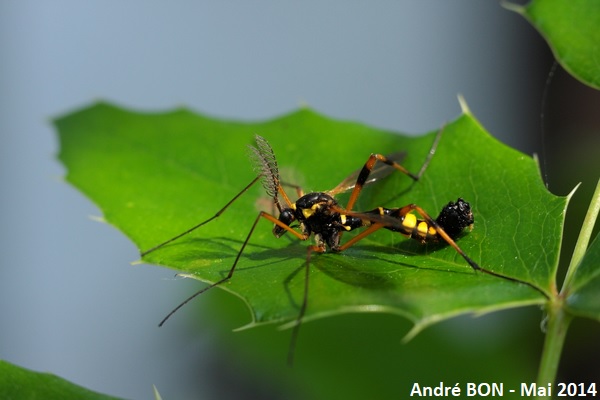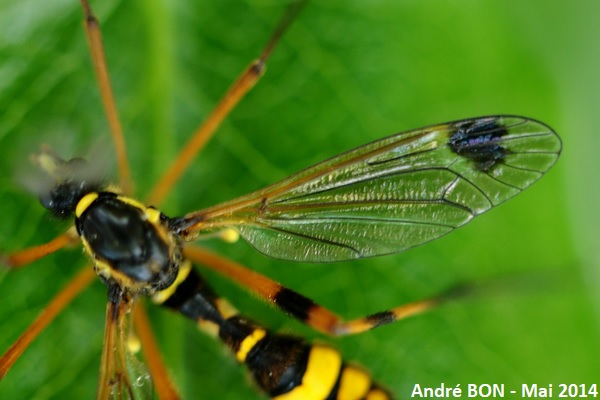

| Ctenophora (Cnemoncosis) festiva (Meigen, 1804) |


|
|
Scientific name: Ctenophora (Cnemoncosis) festiva (Meigen, 1804) Common name: French name: Cténophore agréable Order: Diptera Family: Tipulidae Wingspan : 15-33mm. Biotope: Forests, parks and gardens. Geographic area: West of the Palaearctic region, from the Netherlands in the north south to northern Italia and northern Spain, east to Lithuania, Greece and north of the Caucasus. Observation period : May to June. |
You can easily recognize the Crane flies of the Ctenophorinae subfamily, among the Tipulidae family, with their thicker body, coloured with black and yellow or red or orange, and with their shiny thorax marked with yellow on the lateral sides. Segments 4 to 12 of males' antennae are strongly pectinate (comb-like). Females' antennae are rather thread-like but show bristles at the base of each segment. Ctenophora festiva's wings show a rounded dark spot close to the apex but not reaching the tip of the wings. The upper side of the thorax is black. The base of the hind tibia is marked with a broad black ring. The abdomen is black with yellow markings, mainly on the middle segments. The larvae grow in rotting wood. |
| [To know more about the Ctenophora (Cnemoncosis) festiva] [Next picture] [Top] |

|
I have observed this male close to the ground, landed on a leaf of Oregon-grape (Mahonia aquifolium), at the foot of a tree in my garden. Impressed by the beautiful comb-like antennae I have tried to shoot close-up pictures but without getting any acceptable result. |
| [To know more about the Ctenophora (Cnemoncosis) festiva] [Previous picture] [Top] |

|
Close-up view of the wing with the apical spot. |